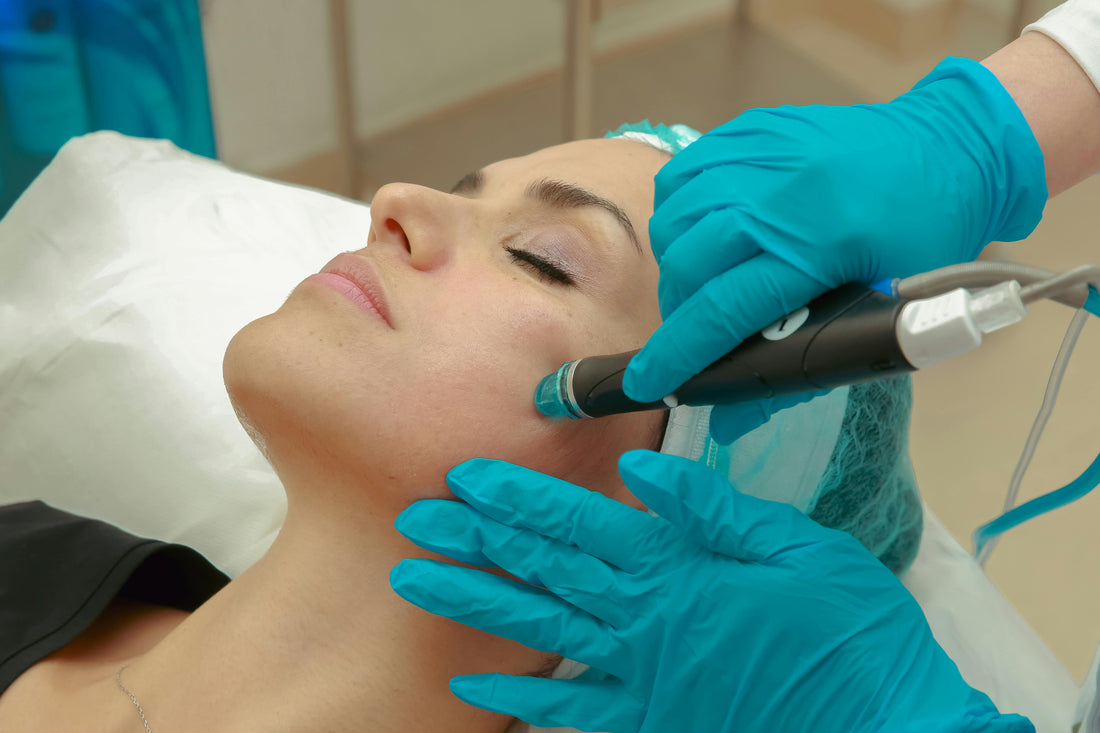Microneedling pens have gained popularity as a non-invasive skincare treatment for improving skin texture, reducing wrinkles, and addressing various dermatological concerns. However, with the proliferation of at-home microneedling machines, questions about their safety have arisen. We will now delve into the safety aspects of microneedling pens, examining their mechanisms of action, potential risks, and best practices to ensure safe and effective treatment.
Understanding Microneedling Pens
Microneedling pens, also known as derma pens or micro-needling devices, are handheld devices equipped with fine needles that penetrate the skin's surface to create controlled micro-injuries. These micro-injuries stimulate the skin's natural healing response, triggering collagen and elastin production, which leads to improved skin texture, firmness, and elasticity over time.
Unlike traditional manual microneedling rollers, microneedling pens feature automated mechanisms that control the depth and speed of needle penetration, allowing for more precise and consistent treatments. Additionally, many microneedling pens are equipped with disposable needle cartridges to ensure sterility and minimize the risk of infection.
Safety Considerations
While microneedling pens can offer significant benefits for skin rejuvenation, it is essential to recognize that they are not without potential risks. The primary safety considerations associated with microneedling pens include the risk of infection, irritation, and adverse reactions. Improper use, inadequate sterilization, or excessive needle depth can increase the likelihood of these complications.
Additionally, individuals with certain skin conditions or medical histories may not be suitable candidates for microneedling. Conditions such as active acne, eczema, rosacea, or psoriasis may be exacerbated by microneedling treatments, while individuals with a history of keloid scarring or autoimmune disorders may be at increased risk of adverse reactions.
Professional vs. At-Home Microneedling
One of the primary distinctions to consider regarding microneedling safety is the difference between professional treatments performed by trained skincare professionals and at-home treatments using microneedling pens. Professional treatments are typically conducted in controlled environments with sterile equipment and trained practitioners, minimizing the risk of complications.
In contrast, at-home microneedling carries a higher potential for user error, as individuals may not have the same level of training or expertise as professional practitioners. However, with proper education, precautions, and adherence to guidelines, at-home microneedling can be performed safely and effectively by knowledgeable individuals.
Best Practices for Safe Microneedling
To ensure the safety and efficacy of microneedling treatments, several best practices should be followed:
- Consultation with a Professional: Before initiating microneedling treatments, individuals should consult with a qualified skincare professional or dermatologist to assess their suitability for the procedure and receive personalized recommendations.
- Sterilization and Hygiene: It is crucial to ensure that the microneedling pen and any accompanying accessories are properly sterilized before each use to prevent the risk of infection. Disposable needle cartridges should be used for single-use only and discarded after each treatment.
- Patch Testing: Prior to performing a full-face treatment, individuals should conduct a patch test on a small area of skin to assess their tolerance to microneedling and minimize the risk of adverse reactions.
- Appropriate Needle Depth: The needle depth setting on the microneedling pen should be adjusted according to the individual's skin type and concerns. In general, shallower needle depths are recommended for sensitive or thin skin, while deeper depths may be suitable for addressing more significant concerns such as acne scars.
- Post-Treatment Care: After microneedling treatments, it is essential to follow appropriate post-treatment care instructions, including the use of gentle cleansers, moisturizers, and sunscreen to protect the skin and promote healing. Avoiding sun exposure and harsh skincare products is also recommended in the days following treatment.
By adhering to these best practices, individuals can minimize the risk of adverse reactions and maximize the safety and effectiveness of microneedling treatments.
Clinical Evidence and Safety Profile
Numerous clinical studies have investigated the safety and efficacy of microneedling for various dermatological indications. Overall, research suggests that microneedling is a relatively safe and well-tolerated procedure when performed by trained professionals using appropriate techniques and equipment.
Adverse reactions such as erythema, swelling, and temporary discomfort are common after microneedling but typically resolve within a few days. Serious complications such as infection or scarring are rare but can occur with improper technique or inadequate sterilization.
Additionally, microneedling has been shown to be effective for a wide range of skin concerns, including acne scars, fine lines, hyperpigmentation, and stretch marks, with minimal risk of pigmentary changes or post-inflammatory hyperpigmentation in properly selected patients.
Regulatory Considerations
It is essential to consider regulatory factors when purchasing and using microneedling pens, particularly for at-home use. Depending on the jurisdiction, microneedling pens may be classified as medical devices and subject to regulatory oversight by health authorities. It is crucial to ensure that any device purchased for home use complies with applicable regulations and meets quality and safety standards.
Microneedling pens can be safe and effective tools for improving skin texture and addressing various dermatological concerns when used properly and responsibly. While there are potential risks associated with microneedling, particularly with at-home treatments, these risks can be minimized with proper education, sterilization, and adherence to best practices. Consulting with a qualified skincare professional or dermatologist is recommended to determine the suitability of microneedling and receive personalized guidance for safe and effective treatment. With careful consideration and attention to safety measures, individuals can harness the benefits of microneedling pens to achieve healthier, more radiant skin.

